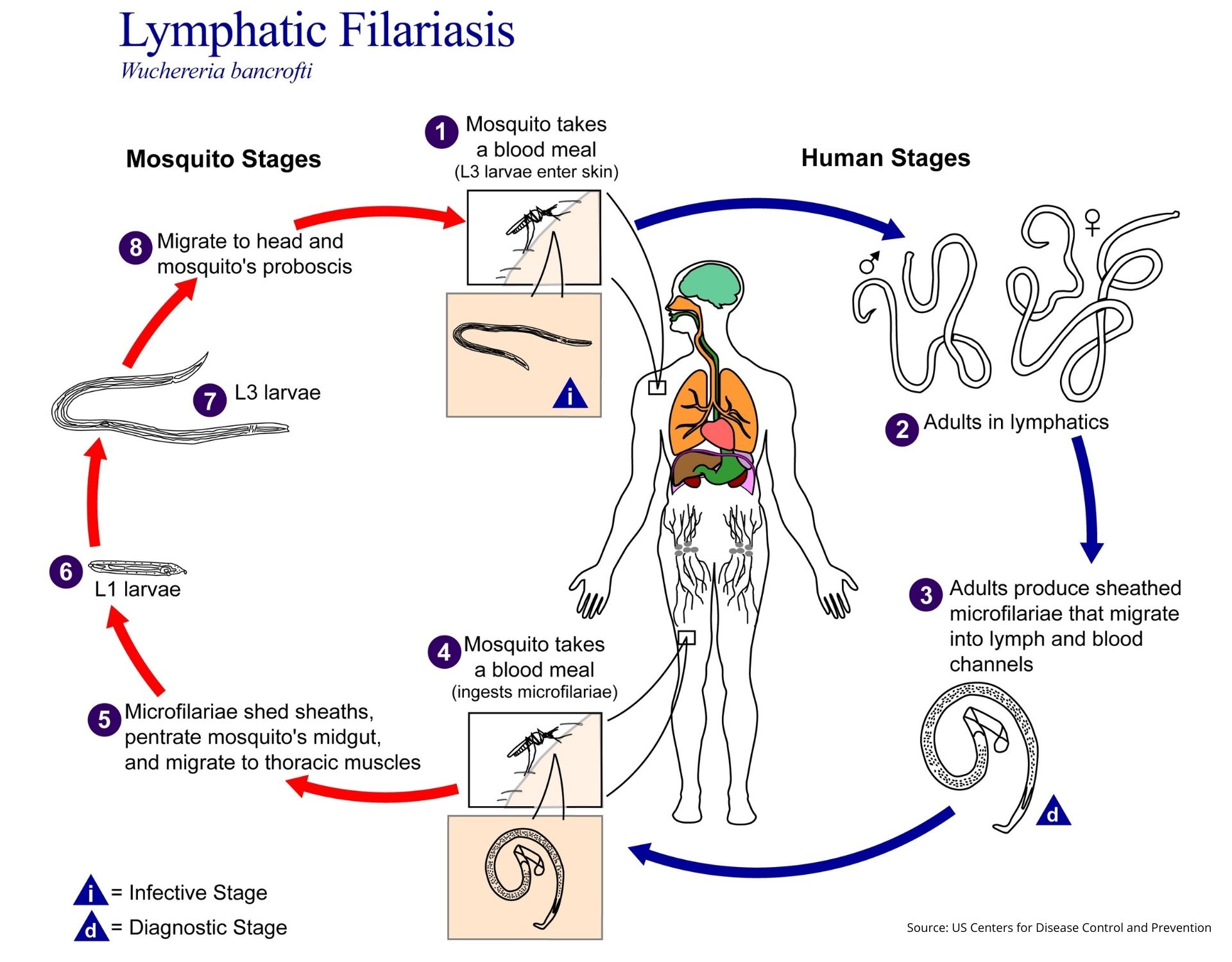Lymphatic Filariasis: (lim-fat-ik fĭl’ə-rī’ə-sĭs) is a parasitic disease endemic throughout the world, but found primarily in Africa, India, and the Pacific Islands. In Africa, LF is caused by the parasitic, threadlike worm Wuchereria bancrofti, and is transmitted to humans through the bites of mosquitoes. Long-term infection with LF can lead to painful and disfiguring chronic enlargement of the arms, legs, breasts, and genitals of people of all ages. It can cause severe swelling in the testicles, a condition known as hydrocele, which can be reversed surgically. The disease is commonly called “elephantiasis” because of the elephant-like appearance of swollen limbs in those most severely affected. Infection with LF can cause severe physical and psychological disability. In addition, men with hydroceles often suffer from sexual dysfunction. Like river blindness, LF also has a significant economic impact when productivity is reduced due to the disabilities caused by the disease.
LF Disease Burden
The World Health Organization estimates that worldwide there are:
Clinical Manifestations
In the first year of infection, a person may experience few or mild symptoms. However, with repeated infections over several years, a person may develop outward manifestations of the disease. Through a variety of mechanisms, the adult worms in the lymphatic system alter the structure and functioning of the lymphatic vessels, resulting in one or more of the following conditions:

- > Adenolymphangitis: Acute episodes of adenolymphangitis (ADL) is a common clinical manifestation of LF, characterized by recurrent attacks of fever associated with inflammation of the lymph nodes and/or lymph vessels.
- > Lymphedema: abnormal accumulation of lymph fluid in the tissues, causing swelling of a limb or other parts of the body which are then more susceptible to repeated bacterial infections.
- > Elephantiasis: disabling and disfiguring chronic lymphedema of the limbs, breasts, or genitals, accompanied by marked thickening of the skin.
- > Hydrocele: fluid-filled, balloon-like enlargement of the sacs around the testes which, if left untreated, can destroy the testicles.
Treatment
Status of MDA for Lymphatic Filariasis in 2022
Status of MDA for Lymphatic Filariasis in 2022
KEY:
I = Mectizan (ivermectin)
D = diethylcarbamazine (DEC)
A = albendazole
MDA Not Started or Not Implemented | MDA Started but Not at Scale | MDA Scaled to All Endemic IUs* | In Post-MDA Surveillance | LF Eliminated as a Health Problem |
|---|---|---|---|---|
|
|
|
|
|
*Implementation Units
Source: World Health Organization

